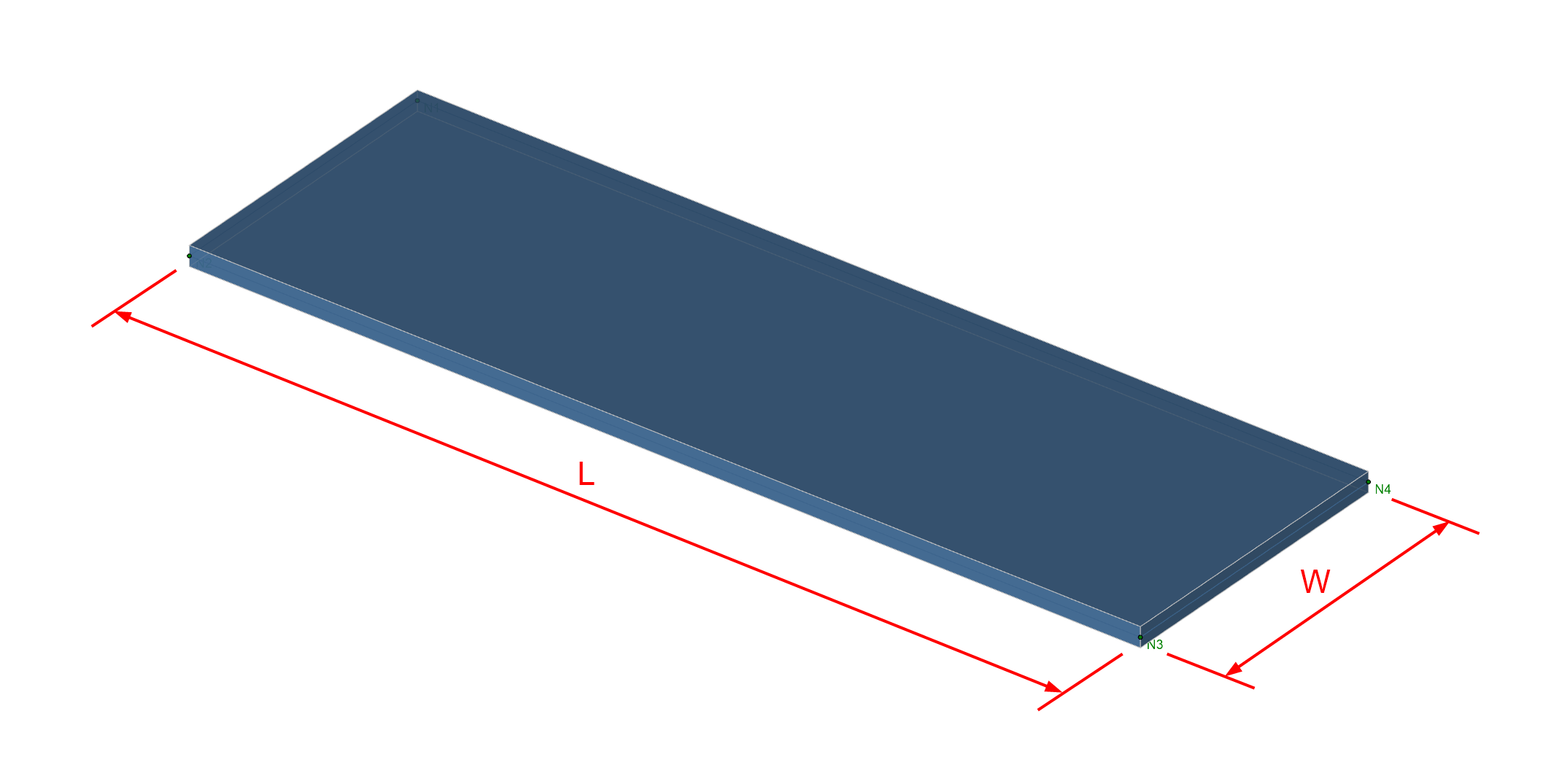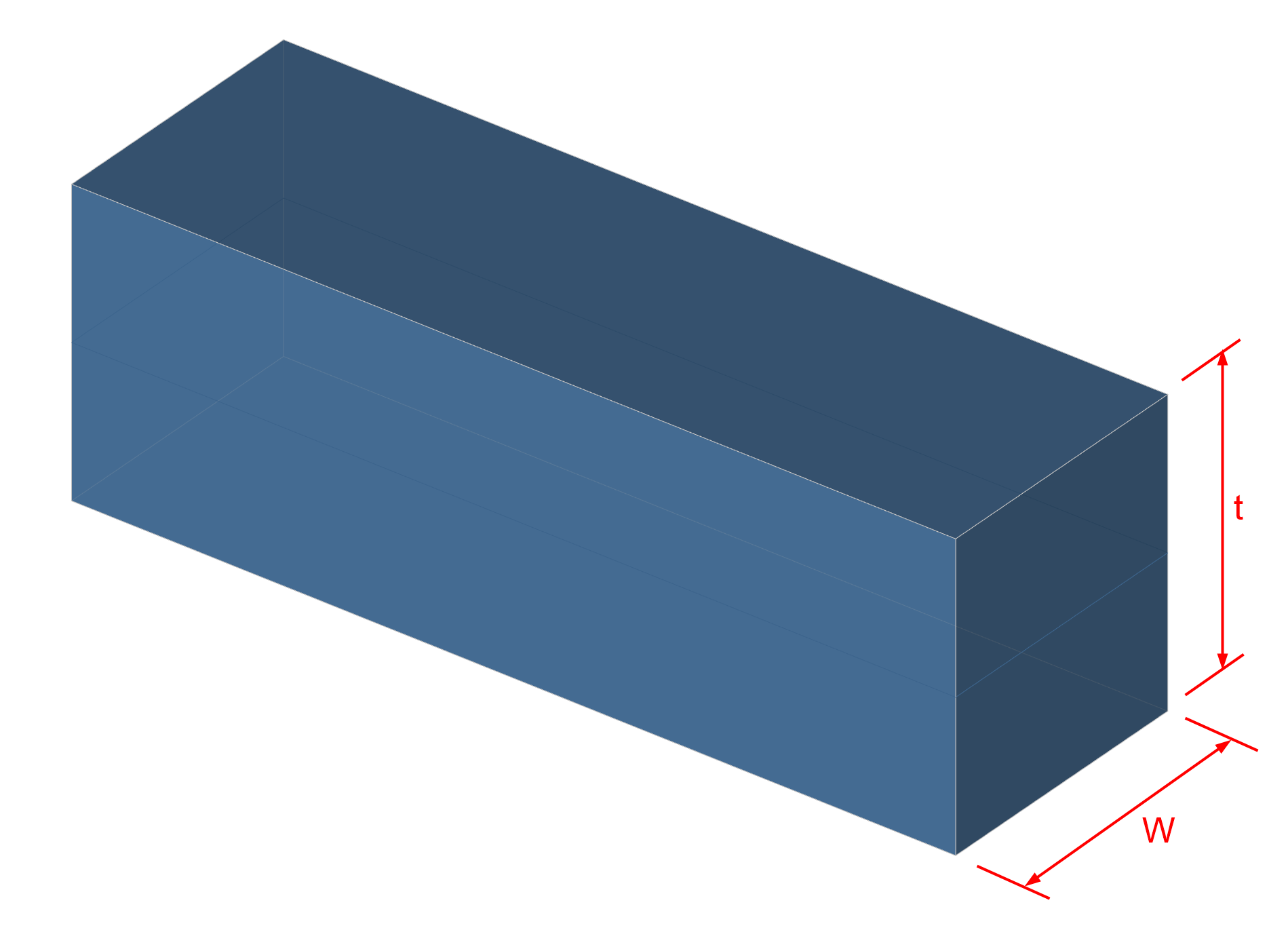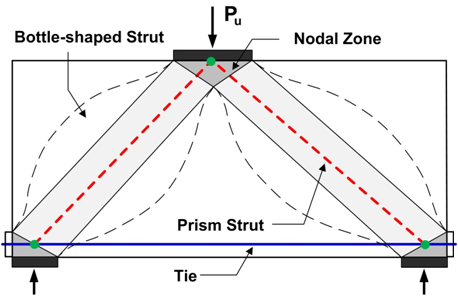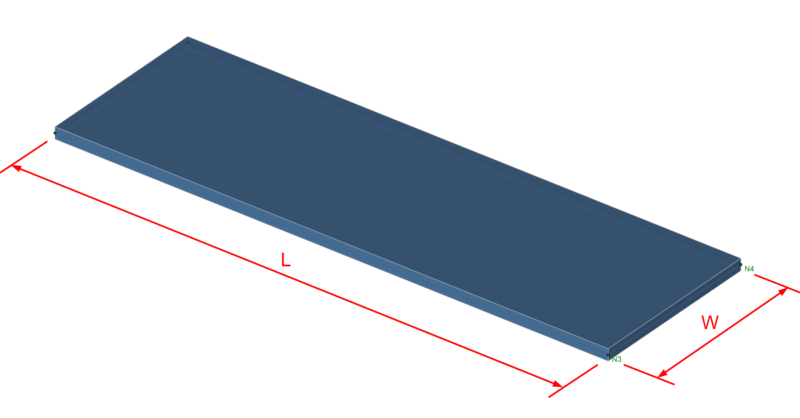Products
Learn
Support
Company
It is important to submesh plate elements in your model in order to obtain the most accurate results. However, many users wonder what the approximate guidelines for plate dimensions are acceptable.
The l/w ratio ≤ 9.0 is the suggested ratio to follow for the length to width relationship. When the plate gets too long and skinny and is above this ratio you get gradual degradation of your plate model.

From experience and from plate modeling references a t/w ratio ≤ 3.0 typically gives adequate results. Similar to the l/w ratio, any value above this ratio may affect the accuracy of your results.

When the thickness of a plate element becomes too deep, the behavior of the plate and applied load will be more similar to a deep beam. The distribution of strains across depth of the cross section will be nonlinear and significant amount of the load is carried to the supports by drag struts:

This is not desirable behavior with plate elements. As the thickness increases beyond the recommended ratios mentioned previously, you may want to consider modeling solid elements in RISA-3D instead.
These approximate guidelines are only suggestions based on RISA’s internal testing and plate modeling references. Plate modeling is very much based on engineering discretion and not all cases will conform to the suggestions listed here.
